As human beings, we love to keep score because it fulfills a primal need to compare ourselves to others. Am I “better” than him or her? What must I do to “catch up?” Or is he or she the one who needs to “catch up” to me? Although keeping score can have negative consequences in professional and personal relationships alike, when it comes to marketing automation keeping score – Lead Scoring – can help you accelerate the time it takes to convert a prospect into a customer.
Lead Scoring ranks prospects on a scale developed by you, or by a marketing automation software provider such as HubSpot, Marketo or SharpSpring, to represent the perceived value a lead (potential customer) represents to your company. Lead Scoring is highly beneficial because it helps you separate “prospects” from “suspects” and allocate your marketing resources wisely. Without Lead Scoring, you are arguably shooting arrows in the dark, unaware of where your target is (or targets are) and what amount of effort it will take you to score a bull’s eye.
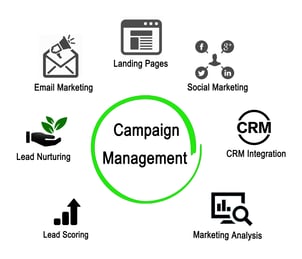
The score each lead receives determines the perceived value of a prospect. Should consider a prospect to be a Marketing Qualified Lead (MQL)? That is, someone who has expressed interest in your products or services.
Or is that person a Sales Qualified Lead (SQL), someone whom you’ve qualified as a potential buyer based on continual interest in your products or services, and who’s ready to interact with your sales team?
Specifically, if you’re communicating with prospects and customers through eNewsletters, targeted mailers and other tools developed through a marketing automation software platform such as the ones mentioned earlier, you’ll want to monitor the behavior of prospects and customers who receive your communication by knowing the answers to these questions:
- Did they open your eNewsletter or Targeted Mailer?
- What links did they click?
- How long did they spend looking at your communication?
- How many times did they re-open your eNewsletter or targeted mailer?
- What story or stories did they click?
- What forms did they fill out?
- What information did they download?
- How many of your website’s pages did the prospect visit? Which ones?
Computation of Lead Scores occurs using proprietary mathematical formulas that separate the wheat from the chaff – serious prospects from casual prospects to non-prospects. HubSpot, the marketing automation platform I use, computes the scores automatically. Here is an example of a Lead Scoring dashboard I’ve created for one of the clients my firm serves.
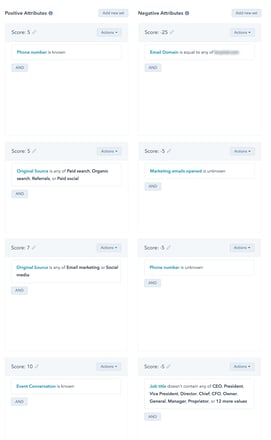 The criteria necessary to input for obtaining a prospect’s Lead Score through the automatic calculations referenced includes:
The criteria necessary to input for obtaining a prospect’s Lead Score through the automatic calculations referenced includes:
- If a record (prospect) meets the Positive Attributes you set, points are added to the prospect’s score. When the prospect doesn’t meet your criteria because, for example, he or she didn’t open one of your eNewsletters after having received and opened several of the previously, points will be removed from that individual’s Lead Score.
- If a record meets the Negative Attributes you set, points are removed from that individual’s score. If the prospect later engages with you by opening an eNewsletter or Targeted Mailer and downloads gated content in exchange for providing his or her contact information, or visits your website, points will be “credited back” to that contact.
- If a criterion is removed, all records will be re-evaluated. Therefore, if you remove a criterion from the Positive Attributes set, points may be removed from your records, and vice versa.
 How do you know if you’re getting good leads?
How do you know if you’re getting good leads?
The short answer is MQLs convert to SQLs at a rate that enables your sales team to meet its goals. We score leads on a scale from 100 to -25. A lead that scores in the 40-50 range is an MQL – someone who is a strong candidate to purchase your products or services. As you analyze the interactions of leads with your eNewsletters, targeted mailers and related content, patterns start to emerge. Those patterns enable you to develop and refine an effective Lead Scoring Strategy based on the lead scores your marketing automation software generates.
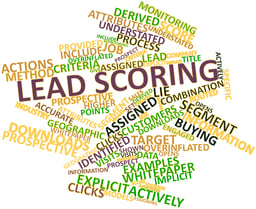
Criteria used to compute the numbers for each MQL or SQL for B2B prospects includes:
- Amount of interaction an individual has with your eNewsletters and targeted mailers (behavior of prospects, noted in detail earlier)
- Company demographics, such as number of employees and type of industry
- Contact’s demographics such as whether he or she has a company e-mail account or uses a consumer account such as Gmail, Yahoo , Hotmail or AOL
- Contact’s position in the organization such as whether he or she is a decision maker or influencer, or a general manager or V-level or C-level executive
- How the prospect found your company, whether through organic search, online advertising, webinars or traditional promotional vehicles such as print advertising, tradeshow/conference networking and trade journal articles
Lead scoring of B2C prospects uses a different set of formulas because such prospects are often more difficult to identify compared to B2B prospects whom one can expect to hold specific job titles in precisely defined industries.
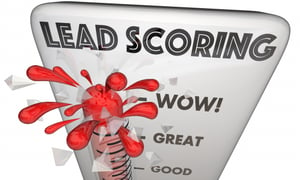 Using the Information You Collect
Using the Information You Collect
When a prospect shows interest in your products or services, we “record” that information for you through HubSpot and assign a value to specific actions based on the numbers we’ve assigned to a prospect engaging in any of these actions:
- Opening your eNewsletters and Targeted Mailers
- Measuring the time a prospect spends with your eNewsletters and Mailers
- Counting how many times a prospect re-opens your eNewsletters and Mailers
- Tracking the stories prospects read and how much time they spend reading them
- Tracking the forms prospects fill out and the information they download
- Noting which brochures, sales sheets and other gated content prospects download in exchange for providing you with their contact information
- Tracking the web pages they visit on your site immediately after looking at an eNewsletter or Mailer
We then compute those values to determine whether a prospect is an MQL or SQL, and whether he or she is ready to interact with your sales team.
All that information is stored in your HubSpot portal and is accessible to you, and to us, 24/7. After taking a couple of hours to learn how to interpret the data, you can see where your leads are coming from, and which leads are most promising.
If you don’t have the time or inclination pore over the data, that’s OK. My team and I can spearhead those efforts for you as we have earned HubSpot certifications in Marketing Software, Marketing Automation and related areas of relevance so we can give you a summary of our findings and proposed actions while you focus on your core responsibilities.
Frequency Helps
How often you analyze data and score or re-score leads depends on many variables such as time, budget and dynamics of your market or markets.
Ideally, you should engage in lead scoring after distribution of every Newsletter or Targeted Mailer, which amounts to an average of once or twice a month.
In my experience, doing lead scoring on a quarterly basis, or less frequently, has resulted in clients missing too many business development opportunities and allocating resources to the “wrong” prospects.
With Lead Scoring-related information easily available online through web portals, accessing and analyzing the data is a straightforward process that allows you to segment prospects based on how their interests and behavior intersect with the products or services you’re promoting.
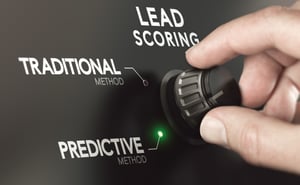 A Winning Strategy
A Winning Strategy
Lead Scoring is critical to the ongoing success of digital marketing campaigns because you can manage only that which you can measure, and everything else is a wild guess. Numerous studies have shown that companies which use Lead Scoring qualify leads 2x-4x faster than companies that still do things the old-fashioned way.
Additionally, Lead Scoring gives you a predictive methodology for separating serious prospects from less serious ones so your sales team can allocate the scarce resources of time and money in a strategic and financially beneficial manner.
Failure to use Lead Scoring can result in spending valuable time and money on the “wrong” prospects at the expense of engaging the “right” ones. To maximize the effectiveness of your Lead Scoring practices...
